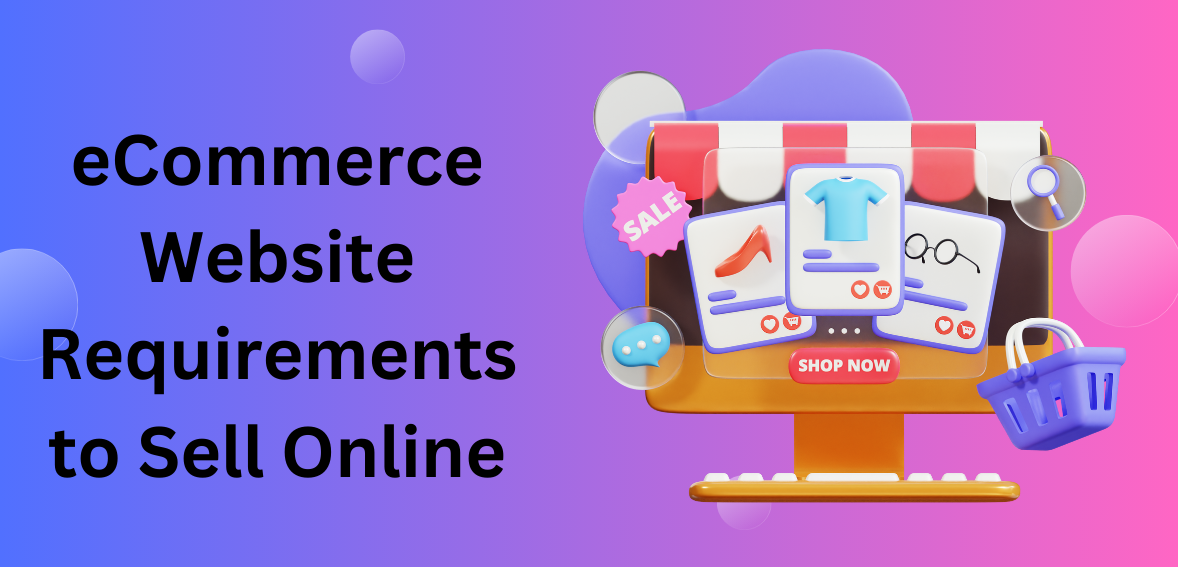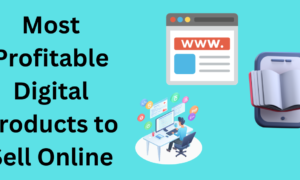Introduction to eCommerce and its Growing Popularity
In today’s digital age, eCommerce has become an integral part of our lives. With the convenience of shopping at our fingertips, it’s no wonder that online sales have skyrocketed in recent years. Whether you’re a small business owner or a seasoned entrepreneur, having a strong online presence is crucial for success.
But simply having an eCommerce website is not enough. To stand out from the competition and attract customers, your website needs to meet certain key requirements. In this blog post, we will explore the 12 essential elements that every successful eCommerce website should have.
So grab your coffee and get ready to dive into the world of eCommerce – because these tips are sure to take your online store from good to great!
Understanding the Importance of a User-Friendly Website
In today’s digital age, having a user-friendly website is paramount to the success of any eCommerce business. Why? Because it directly impacts customer satisfaction and ultimately drives conversions.
A user-friendly website means creating an online shopping experience that is intuitive, seamless, and enjoyable for your customers. It starts with responsive design – ensuring that your website looks great and functions well on all devices, from desktops to smartphones.
Easy navigation is also crucial. Customers should be able to find what they’re looking for quickly and effortlessly. This includes clear categories, logical menu structures, and prominent search features.
Another important aspect is high-quality product images and descriptions. Your customers rely on these visuals to make purchase decisions, so invest in professional photography and provide detailed information about each item.
Customer reviews and testimonials are powerful social proof that instill trust in potential buyers. Displaying these prominently on your site can greatly influence purchasing decisions.
Furthermore, integrating social media into your website allows users to share products they love with their networks – increasing brand exposure organically.
Lastly but certainly not least: security! Providing secure payment gateways reassures customers that their personal information will be protected during transactions.
By understanding the importance of a user-friendly website and implementing these key requirements effectively, you’ll create an online platform that engages visitors while positively impacting conversion rates.
The 15 Key Requirements for a Successful eCommerce Website:
When it comes to running a successful eCommerce business, having a well-designed and user-friendly website is absolutely crucial. In order to ensure that your online store stands out from the competition and attracts customers, there are several key requirements that you need to consider.
Responsive design is essential. With so many people now browsing and shopping on their mobile devices, it’s important that your website is optimized for all screen sizes. This will not only improve the user experience but also boost your search engine rankings.
Another requirement for a successful eCommerce website is secure payment gateways. Customers need to feel confident in entering their personal information and making transactions on your site. By implementing robust security measures, such as SSL certificates and encryption technology, you can provide peace of mind to your customers.
Mobile optimization goes hand in hand with responsive design. More than ever before, people are using their smartphones and tablets to make purchases online. If your website isn’t mobile-friendly, you risk losing potential customers who find it difficult or frustrating to navigate through the pages.
Easy navigation is another key requirement for an eCommerce website. Customers should be able to find what they’re looking for quickly and easily without getting lost or confused along the way. Intuitive menus and clear categorization of products can greatly enhance the user experience.
High-quality product images and descriptions are also essential when selling online. Customers rely heavily on visual content when making purchasing decisions, so make sure that your product photos accurately represent what you’re selling. Additionally, detailed descriptions help customers understand exactly what they’re buying.
Customer reviews and testimonials play a vital role in building trust with potential buyers. It’s important to encourage satisfied customers to leave positive feedback about their purchase experiences.
This social proof helps build credibility around your brand,and ultimately increase sales
Offering multiple shipping options gives customers flexibility in choosing how they want their products delivered.
Different consumers have different preferences,some may prefer faster delivery while others may prioritize cost.
By providing various shipping options,you can cater to a wider range of customers.
– Responsive Design
Responsive design is a crucial requirement for any successful eCommerce website. In today’s mobile-dominated world, having a website that adapts to different screen sizes and devices is paramount. Whether your customers are browsing on their smartphones, tablets, or desktop computers, they should have an optimal viewing experience.
A responsive design ensures that your website looks great and functions seamlessly across all platforms. It eliminates the need for separate mobile versions of your site and provides a consistent user experience. With more people using their phones to shop online, you can’t afford to ignore mobile optimization.
Not only does responsive design improve user experience, but it also has SEO benefits. Google prioritizes mobile-friendly websites in its search engine rankings. So by implementing responsive design, you not only cater to your users’ needs but also increase your chances of being found by potential customers.
Investing in responsive design shows that you value your customers’ convenience and satisfaction. It allows them to navigate through your products effortlessly and makes it easy for them to complete purchases. Don’t underestimate the power of a well-designed website – it can significantly impact conversions and contribute to the success of your eCommerce business!
– Secure Payment Gateways
Secure Payment Gateways are an essential requirement for any successful eCommerce website. When customers make online purchases, they need assurance that their personal and financial information will remain safe. This is where secure payment gateways come into play.
With a secure payment gateway, sensitive data such as credit card numbers and passwords are encrypted during transactions. This ensures that the information cannot be intercepted or accessed by unauthorized individuals. By offering secure payment options, eCommerce businesses can build trust with their customers and increase conversion rates.
There are several popular and trusted payment gateways available in the market today, including PayPal, Stripe, and Authorize.net. These platforms offer robust security features to protect customer data against fraud and cyber-attacks.
In addition to encryption technology, secure payment gateways also provide additional layers of security such as two-factor authentication and address verification systems. These measures help prevent fraudulent transactions by verifying the identity of the buyer.
By integrating a reliable and secure payment gateway into your eCommerce website, you not only protect your customers but also enhance their shopping experience. With peace of mind knowing their information is safe from potential threats, customers will be more likely to complete their purchase without hesitation.
Investing in a secure payment gateway is not just about compliance with industry standards; it’s about safeguarding your business reputation while providing convenience for your customers. So take this requirement seriously when setting up your eCommerce website – it could make all the difference in building trust with your audience!
– Mobile Optimization
Mobile Optimization
In today’s digital age, mobile devices have become an integral part of our lives. People are constantly on the go, relying on their smartphones and tablets for almost everything – from checking emails to browsing social media and even shopping online. This shift in behavior has had a significant impact on the eCommerce industry, making it crucial for businesses to prioritize mobile optimization.
A user-friendly and responsive website is essential when it comes to selling online. With more than half of all internet traffic coming from mobile devices, having a mobile-optimized website is no longer optional – it’s a requirement.
When your eCommerce website is not optimized for mobile users, you risk losing potential customers who might get frustrated with slow loading times or clunky navigation. In fact, studies show that 57% of users say they won’t recommend a business with a poorly designed mobile site.
To ensure your eCommerce website provides an optimal experience for mobile users, consider implementing features such as adaptive design, which adjusts the layout according to screen size; fast loading times; and simplified navigation menus.
Remember that your goal is to create a seamless shopping experience across all devices. By investing in mobile optimization, you can increase customer satisfaction and ultimately boost sales conversions.
So don’t overlook the importance of catering to the growing number of consumers who prefer shopping on their smartphones or tablets. Mobile optimization should be at the top of your list when developing or revamping your eCommerce website!
– Easy Navigation
Easy Navigation is a crucial requirement for any successful eCommerce website. When potential customers visit your online store, they should be able to find what they’re looking for quickly and effortlessly.
One way to ensure easy navigation is by organizing your products into logical categories and subcategories. This helps users easily browse through your inventory and find the specific items they need. Consider using drop-down menus or sidebar filters to further enhance the user experience.
Another important aspect of easy navigation is having a clear and intuitive menu structure. Your main menu should be prominently displayed at the top of every page, with each category clearly labeled. Avoid cluttering the menu with too many options, as this can overwhelm visitors.
Additionally, incorporating a search bar on your website allows users to directly search for specific products or keywords. Make sure that the search function provides relevant results and offers suggestions if no exact match is found.
Don’t forget about internal linking within your website. By strategically placing links throughout your content, you can guide users from one page to another seamlessly, increasing engagement and reducing bounce rates.
Easy navigation plays a vital role in ensuring a positive user experience on an eCommerce website. By implementing effective organization strategies, clear menus, search functionality, and internal linking techniques; you can make it effortless for customers to explore and discover what you have to offer!
– High-Quality Product Images and Descriptions
When it comes to selling products online, high-quality product images and descriptions are absolutely crucial. In the digital world, customers rely heavily on visuals to make purchasing decisions. A blurry or poorly lit image can instantly turn potential buyers away. That’s why investing in professional photography is a must for any eCommerce website.
Your product descriptions also play a vital role in capturing your customer’s attention and conveying the unique features of your products. Be concise yet descriptive, highlighting the key benefits and specifications that set your offerings apart from others in the market.
But it’s not just about having great images and descriptions; it’s also about optimizing them for search engines. By using relevant keywords strategically throughout your content, you increase the chances of your products appearing higher up in search engine results pages (SERPs). This means more visibility and ultimately more sales.
In addition to attracting new customers, high-quality product images and descriptions can also help reduce returns by providing accurate representations of what you’re selling. When customers have a clear understanding of what they’re getting before making a purchase, there are fewer surprises later on.
Remember, when it comes to eCommerce success, every detail matters – including how you present your products visually and through compelling written content. So take the time to invest in high-quality imagery and craft engaging descriptions that will entice shoppers and keep them coming back for more!
– Customer Reviews and Testimonials
Customer Reviews and Testimonials play a crucial role in the success of an eCommerce website. When potential customers visit your site, they want to know if others have had positive experiences with your products or services. That’s where customer reviews and testimonials come in.
These reviews provide social proof that instills trust and confidence in your brand. Positive reviews can influence buying decisions, while negative ones give you the opportunity to address any concerns and improve customer satisfaction.
To make the most of customer reviews, it’s important to display them prominently on your website. Consider featuring them on product pages or creating a dedicated section for testimonials. This allows visitors to easily access and read what others have said about their experience with your business.
Encourage customers to leave feedback by sending follow-up emails after purchase or offering incentives such as discounts for leaving a review. Responding promptly to both positive and negative feedback shows that you value customer opinions and are committed to providing excellent service.
Remember that authenticity is key when it comes to customer reviews. Avoid fake testimonials as they can damage your credibility in the long run. Instead, focus on building genuine relationships with customers who will willingly share their honest opinions about their interactions with your brand.
By leveraging the power of customer reviews and testimonials, you can build trust, increase conversions, and ultimately drive sales for your eCommerce business!
– Multiple Shipping Options
When it comes to running an eCommerce website, offering multiple shipping options is essential. Why? Because customers have different preferences and needs when it comes to receiving their orders. By providing a variety of shipping options, you can cater to these diverse demands and increase customer satisfaction.
Having multiple shipping options allows your customers to choose the method that best suits their requirements. Some may prefer faster delivery for urgent purchases, while others may prioritize cost-effectiveness and opt for longer delivery times. By giving them the freedom to decide, you empower your customers and create a positive shopping experience.
Additionally, offering various shipping options can help you reach a wider audience. Some customers may be willing to pay extra for expedited or international shipping, allowing you to tap into new markets and expand your customer base.
Moreover, having multiple shipping options can also serve as a competitive advantage in the market. If your competitors only offer standard shipping with fixed delivery times, providing additional choices sets you apart from the crowd and gives potential buyers another reason to choose your online store over others.
In conclusion (sorry!), incorporating multiple shipping options on your eCommerce website is crucial for meeting customer expectations, reaching new markets, and gaining an edge in the competitive online landscape. So don’t overlook this requirement if you want to succeed in selling products online!
– Social Media Integration
Social media integration is a vital requirement for any successful eCommerce website. In today’s digital age, social media plays a crucial role in driving traffic and increasing brand awareness. By integrating social media platforms such as Facebook, Instagram, Twitter, and Pinterest into your eCommerce site, you can reach a wider audience and attract potential customers.
One of the key benefits of social media integration is the ability to share product information and promotions directly with your followers. This not only helps to generate interest but also encourages users to share your content with their own network. Additionally, by allowing customers to log in or register using their social media accounts, you provide a convenient and seamless user experience.
Moreover, incorporating social sharing buttons on product pages allows visitors to easily share products they like on their own profiles. This kind of user-generated content serves as valuable social proof that can influence purchasing decisions.
Another advantage of integrating social media is the ability to run targeted advertising campaigns. Social platforms offer powerful targeting options based on demographics, interests, and behavior patterns—allowing you to reach potential customers who are most likely interested in your products or services.
Furthermore, by regularly engaging with your audience through posts, comments, and messages on social media channels can help build trust and loyalty among existing customers while attracting new ones.
In conclusion (as per instruction), integrating social media into an eCommerce website has become essential for businesses looking to thrive online. It provides numerous opportunities for reaching wider audiences effectively while strengthening relationships with existing customers—all leading towards increased sales conversions for your business!
– Search Engine Optimization (SEO)
Search Engine Optimization (SEO) is a crucial aspect of any successful eCommerce website. It involves optimizing your site to rank higher in search engine results, which can greatly increase your visibility and attract more potential customers.
To effectively optimize your eCommerce site for search engines, there are several key requirements you need to fulfill. Make sure your website has relevant and high-quality content that is optimized with the right keywords. This will help search engines understand what your site is about and improve its ranking.
Ensure that your website’s structure is easy to navigate for both users and search engines. Use clear and descriptive URLs, create a logical hierarchy for your pages, and include internal links to connect related content.
Another important requirement is having unique meta tags for each page on your website. Meta tags provide information about the content of each page and play a significant role in search engine rankings.
Additionally, optimizing product descriptions with relevant keywords can significantly improve the visibility of individual products in organic search results.
Building high-quality backlinks from reputable websites can also boost SEO performance by demonstrating trustworthiness to search engines.
By fulfilling these key requirements of SEO optimization, you can enhance the visibility of your eCommerce website and drive more organic traffic that converts into sales.
– Reliable Customer Support
Reliable Customer Support is a crucial requirement for any eCommerce website. When customers have questions, concerns, or issues with their purchases, it’s important to provide them with prompt and helpful assistance.
One way to ensure reliable customer support is by offering multiple channels of communication. This can include options such as live chat, email support, and a dedicated phone line. By providing various means for customers to reach out, you make it easier for them to get the help they need in a way that suits their preferences.
Another key aspect of reliable customer support is having knowledgeable and friendly staff who are trained to address customer inquiries effectively. They should be able to provide accurate information about products, shipping details, returns policy, and any other relevant queries.
Response time is also crucial when it comes to customer support. Customers expect timely responses to their inquiries or complaints. Aim to respond within 24 hours or less so that customers feel valued and attended-to promptly.
Consider implementing a ticketing system or CRM software that allows you to track customer interactions efficiently. This helps in organizing and prioritizing requests while ensuring no query slips through the cracks.
By prioritizing reliable customer support on your eCommerce website, you build trust with your customers and enhance their overall shopping experience – ultimately leading to increased loyalty and repeat business!
– Simple Checkout Process
A smooth and hassle-free checkout process is crucial for any eCommerce website. After all, this is the final step where customers make their purchase decisions. If your checkout process is complicated or time-consuming, you risk losing potential buyers.
So, what makes a simple checkout process? First and foremost, it should be easy to navigate and understand. Customers shouldn’t have to jump through hoops just to complete their purchase. Keep the steps minimal and straightforward.
Another important aspect of a simple checkout process is having multiple payment options available. Whether it’s credit cards, PayPal, or other digital wallets, providing various choices gives customers flexibility and convenience.
Additionally, it’s essential to have an option for guest checkout. Not everyone wants to create an account just to make a one-time purchase. By allowing guests to check out without creating an account, you remove unnecessary barriers that might deter them from completing their transaction.
Moreover, displaying clear pricing information throughout the checkout process builds trust with your customers. No one likes surprises when it comes to costs – transparency is key!
Lastly but certainly not least: optimize your website for mobile users! A significant percentage of online shoppers use their smartphones or tablets to make purchases. Ensure that your mobile checkout experience mirrors the desktop version in terms of simplicity and functionality.
Remember: a simple checkout process can significantly impact customer satisfaction and conversion rates on your eCommerce website! So take the time now to streamline this vital stage of the buying journey.
– Clear Return
In today’s competitive online marketplace, having a user-friendly and effective eCommerce website is crucial for success. By meeting the key requirements outlined in this article, you can ensure that your website not only attracts potential customers but also provides them with a seamless shopping experience.
One of the final important requirements for an eCommerce website is clear return policies. Customers value transparency when it comes to returns and exchanges. Make sure your website clearly outlines your return policy, including any time limits or restrictions. This will give customers peace of mind knowing they can easily return or exchange products if needed.
Remember, building a successful eCommerce website takes time and effort. It requires careful planning and attention to detail to create an online store that stands out from the competition. Incorporating these 12 key requirements into your website will help you establish credibility, build customer trust, and ultimately increase sales.
So go ahead and start implementing these essential elements into your eCommerce site today. With a user-friendly design, secure payment gateways, mobile optimization, easy navigation, high-quality product images and descriptions, customer reviews and testimonials, multiple shipping options, social media integration, SEO strategies in place along with reliable customer support – you’ll be on track to achieving online selling success!
Don’t underestimate the power of creating a simple checkout process that minimizes friction points for customers while providing them with various payment options. And remember to always prioritize clear return policies so that shoppers feel confident about making purchases on your site.
Now it’s time for you to take action! Invest in building an exceptional eCommerce platform by following these key requirements – because every element plays its part in ensuring the growth and profitability of your business.
Happy selling!



























